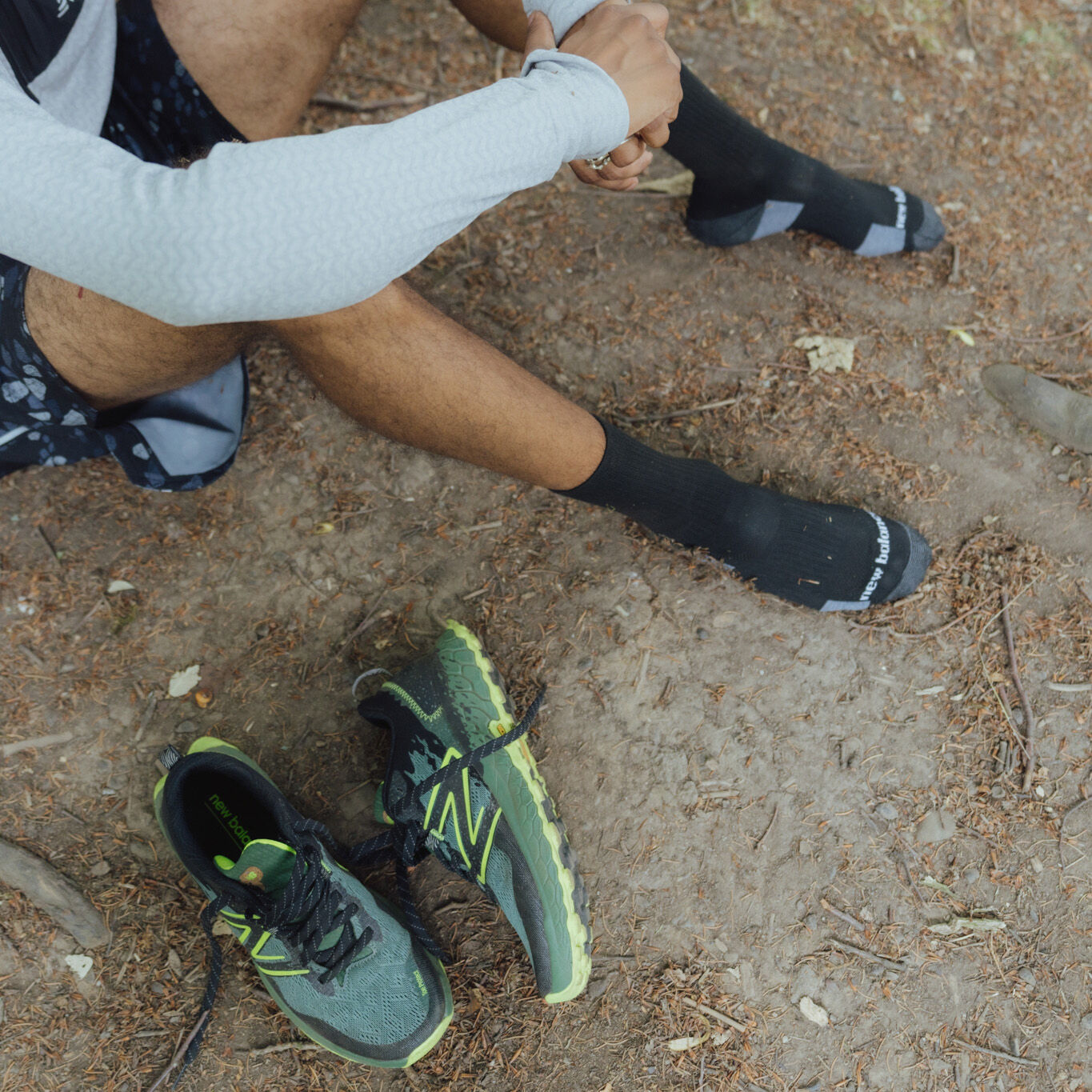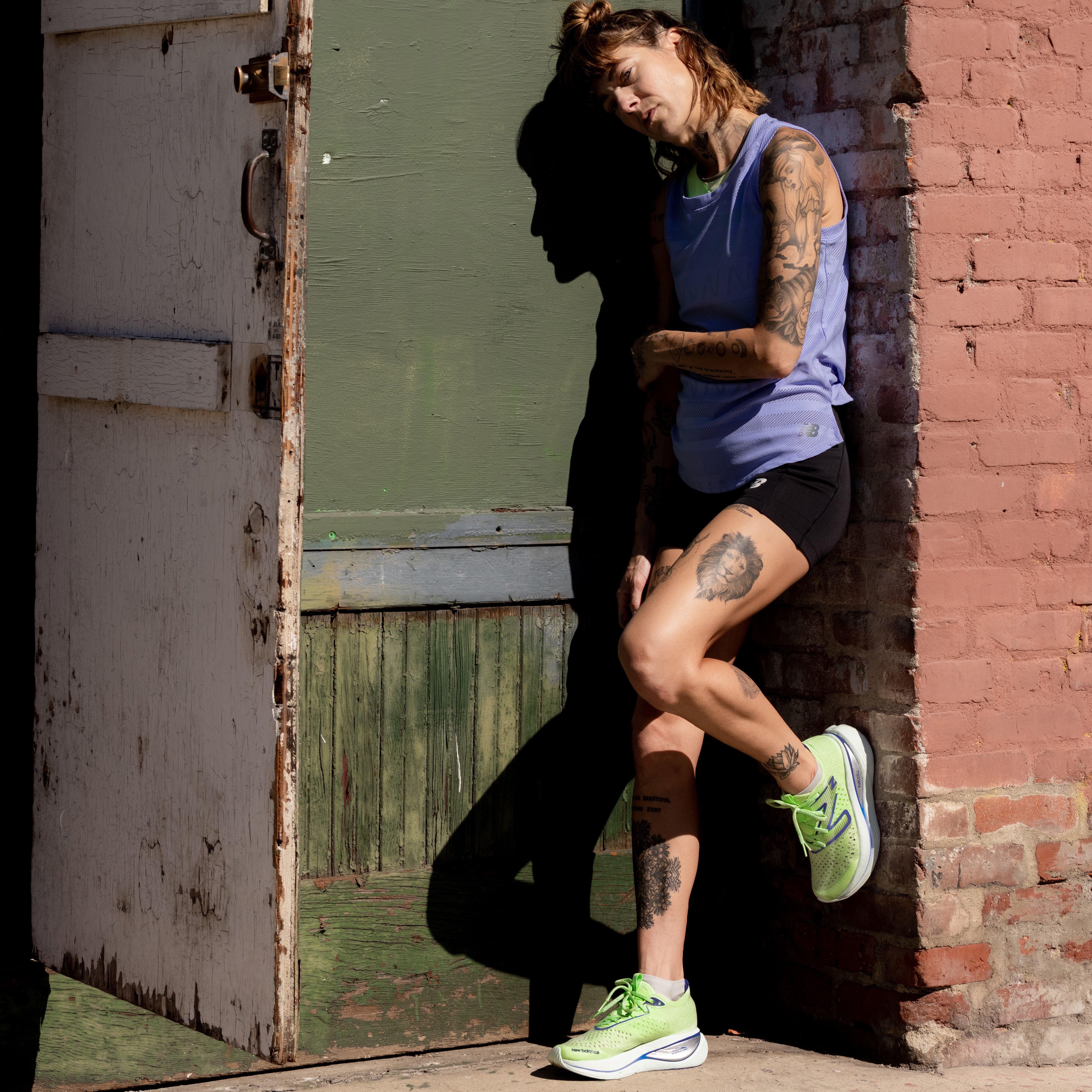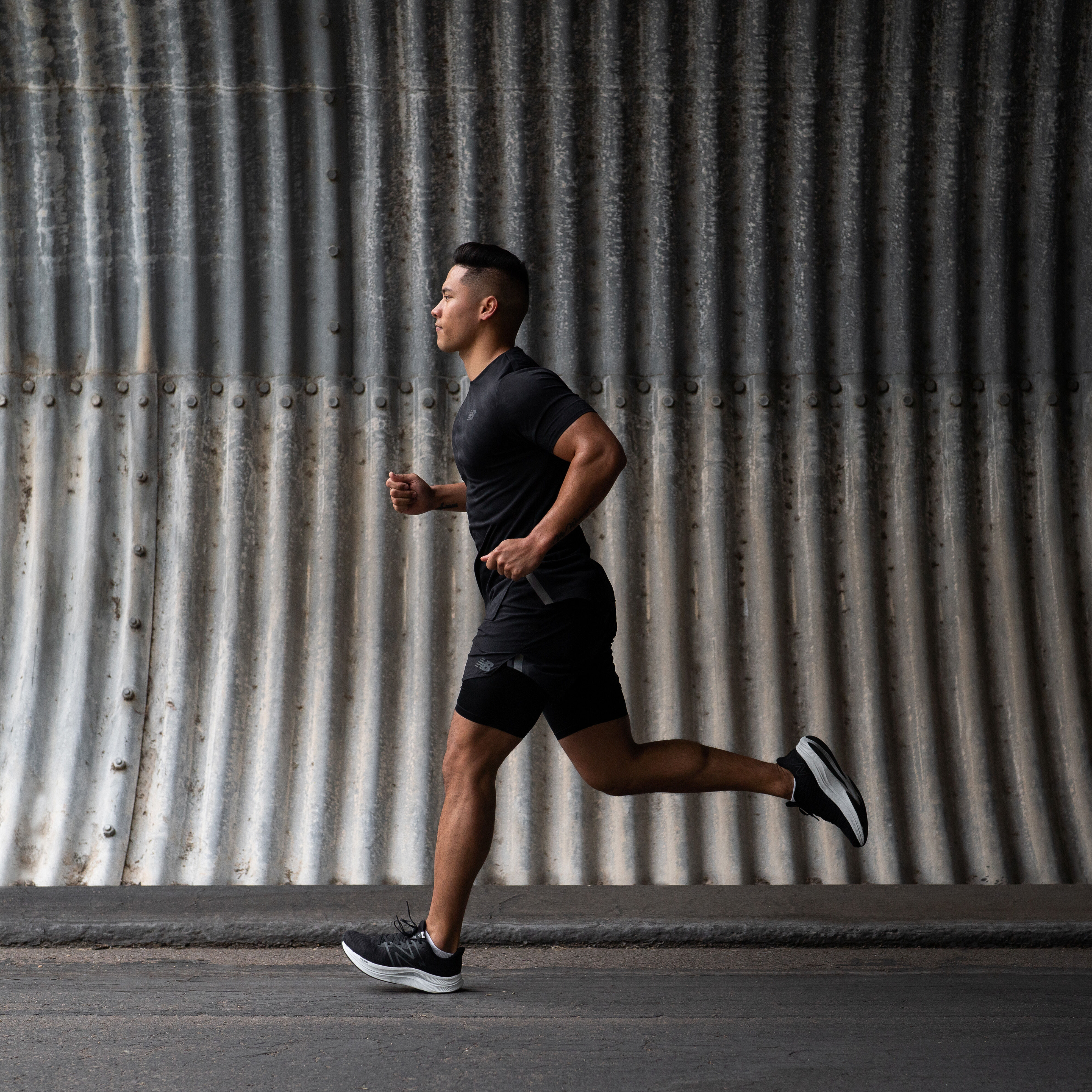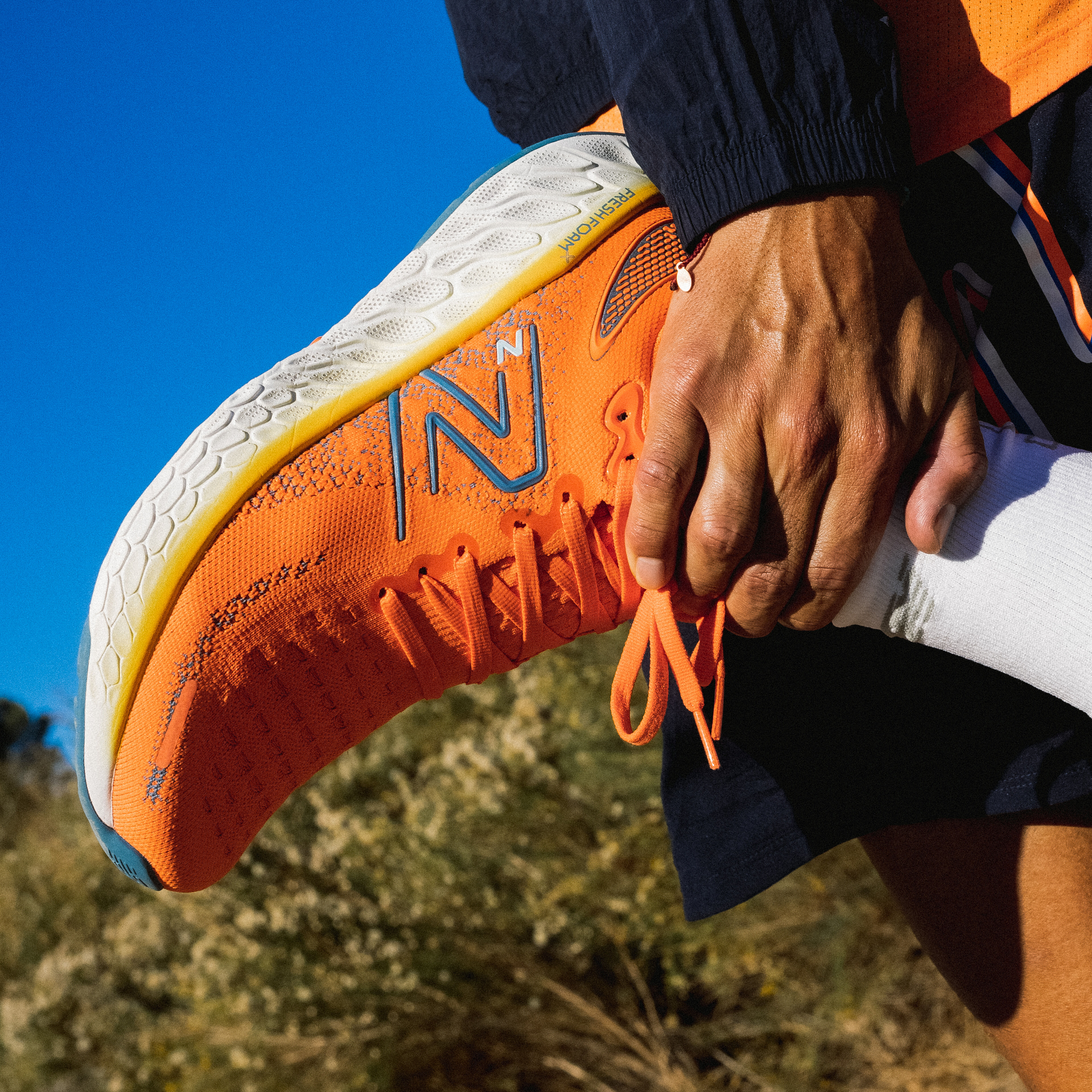
The most common running issues
Shin Splints
If you’ve had shin splints — you’ll know about it. Commonly suffered by beginners or runners who increase their training intensity in a short stretch of time, the main symptom is a persistent, nagging pain in the shin bone. This irritating ailment often occurs as a result of tired or inflexible calf muscles putting stress on tendons, hence why it’s more common in beginners.
The good news is that shin splints can usually be treated easily at home, by resting and applying ice. The bad news is, you probably shouldn’t run while the problem persists. Additional strain could cause a stress fracture — taking you out for even longer. If you’re training for an upcoming race, consider swapping your runs for swimming, cross-training or cycling for a few weeks, to allow your shins to recover.
Runner’s Knee
Like a lot of other common running injuries, runner’s knee is often caused by overuse, rather than trauma. Typified by a general pain around the kneecap or patella, it usually worsens as the intensity of exercise increases.
Runner’s knee can be brought on by body mechanics that aren’t quite in sync. How strong and flexible your muscles are (and how you use them when you run) will have an effect on what your knees go through while you train.
Strengthening your quads, glutes and hip muscles can often help sufferers — as can kinesiology taping. That said: there are a few different flavours of runner’s knee, so figuring out where your weakness or instability lies will help you address the problem properly. If you experience swelling, buckling or instability, see a health professional.
Plantar Fasciitis
One of the most bothersome and stubborn of running injuries – which in severe cases, can last for months or even years before fully healed - plantar fasciitis is characterised by a sharp pain at the base of the heel and arch of the foot. It’s usually more severe first thing in the morning, or the first few paces of a run, gradually easing once you’ve warmed up.
The exact cause of it isn’t fully understood, although it’s been linked with poor ankle range of motion, caused by tight calves, which puts excessive tension on the plantar fascia.
Generally, plantar fasciitis will correct itself with rest – but if you’re training for a race, time might not be on your side. With a little grit and patience you can run through it, and some of the following measures should help to alleviate the pain:
Arch taping: Though not a long-term cure, taping the foot can help to reduce symptoms as you train.
Stretches: Simple foot and calf stretches can help to reduce pain and tension — not to mention prevent injury in the first place. Search for exercises that work the arch of the foot and warm up tight calves.
Night splints: These podiatric braces keep your foot in place while you sleep, stretching the plantar fascia. These are a good (if cumbersome) solution for chronic pain.
Although in many instances you can run through this condition, you also might be doing more harm to yourself in the long-term. It’s always worth seeking advice from a health professional before deciding to just power through!
Prevention is better than cure
By the time you start to notice those persistent pains and twinges, chances are, without time and rest, the problem’s only going to worsen. The best solution is to avoid getting side-lined in the first place. Here are a few tips for running injury prevention:
Wear the right shoes
Choosing the right shoes for you could make the difference between progress and injury. Even if you’re dealing with a calf injury, knee injury, or plantar fasciitis, the culprit could be the imbalance caused by poor ankle support, or shoes that aren’t suited to your running style, habits, or physiology. Have your gait analysed as you try your running shoes to help find the right pair and replace your trainers once they’re worn out.
Incorporate strength exercises into your training
Lots of running injuries are caused by a lack of strength in crucial parts of the body, such as the hips, core and legs, which support the body and handle impact. By incorporating strength training into your routine, it’ll help to reduce muscular fatigue and improve general athleticism.
Improve form
While ‘proper form’ has different meanings to different people, two key components of running technique are posture and stride. Whether it’s a physio, running coach, or a friend with a video camera that helps you figure
out what you’re doing wrong (or what you could be doing better), good running technique can help to prevent and cure all manner of problems.
Returning to training after an injury
Getting back into your training regime after an injury is tough and may feel like you’re way behind where you planned to be. But if there’s anything an injury caused by over-training teaches you, it’s that slow and steady wins the race.

Don’t rush yourself: Start small and increase mileage and speed gradually. Your body will need time to get used to the impact of running again.

Stay positive: Injury may have given you a bit of a knock but maintaining a positive outlook will really help you to get back into the swing of things. Set small realistic goals, which can be celebrated as you reach each one.

Listen to your body: The only person who can truly gage how ready you are to get back into running is you. If you feel any niggles, don’t ignore them, this is your body’s way of saying it’s not quite there yet.
Remember that it’s important to let your body heal after an injury. It takes patience and determination to ease yourself back into your routine in a healthy and safe way. But if you’re sensible and train smart, you could come out the other end a better runner.



